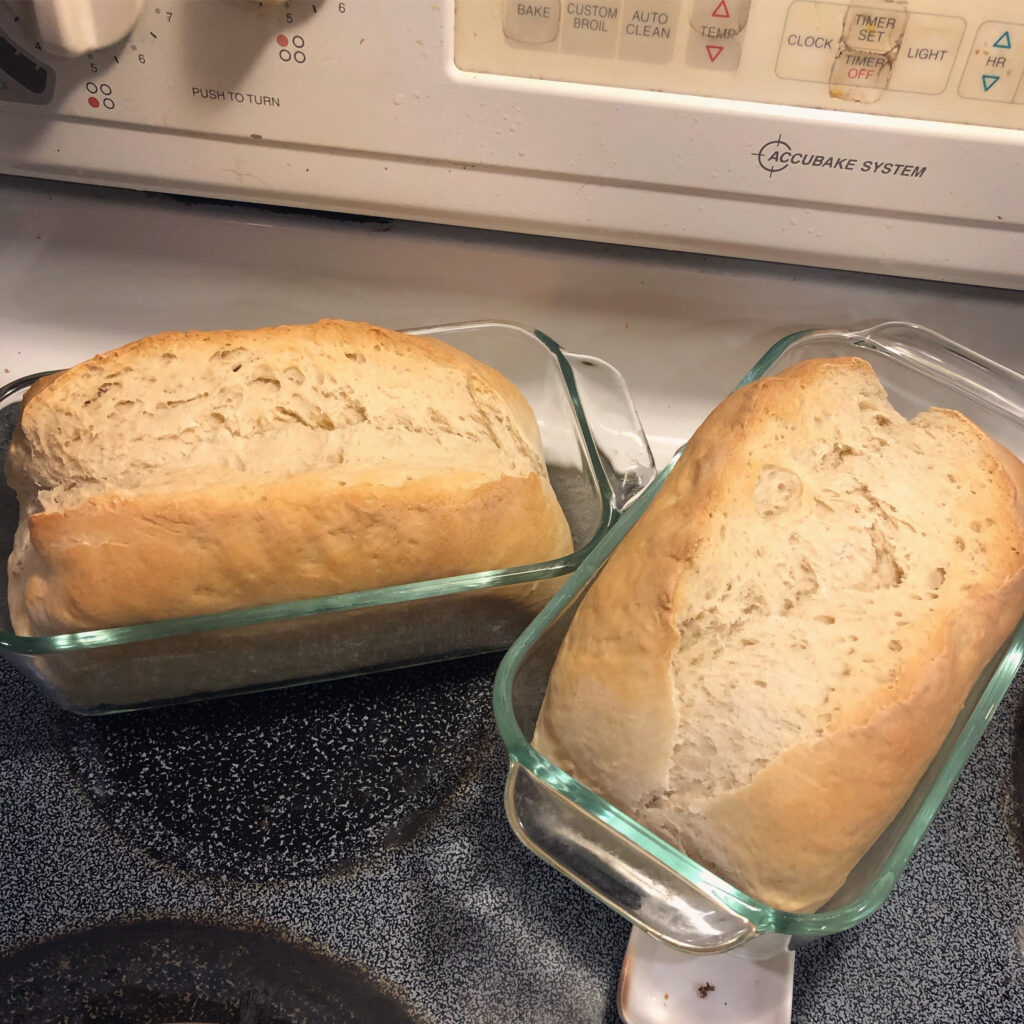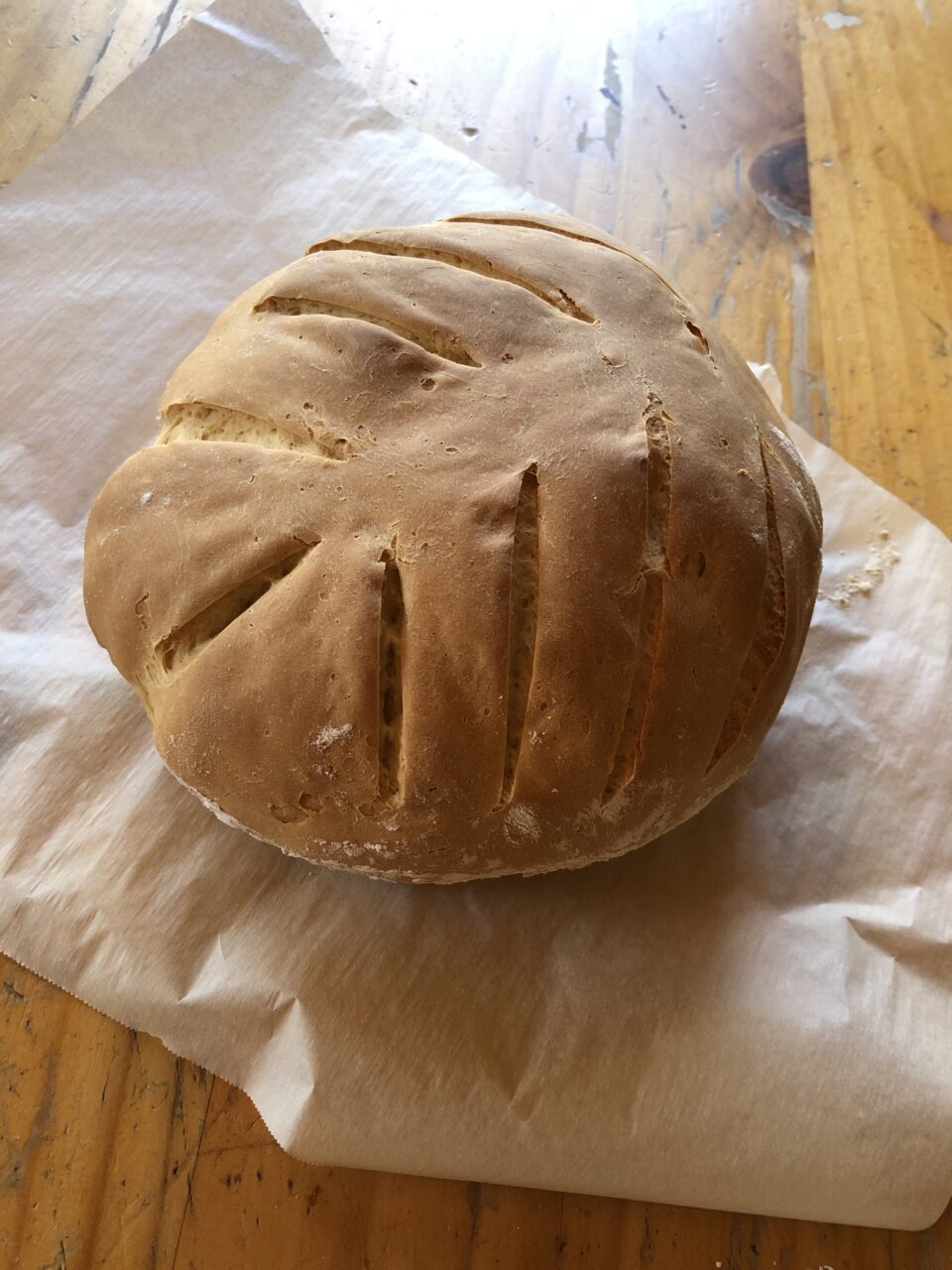I think we can all agree that technology has its blessings and curses. There are great things to be said about the connectivity we enjoy and the convenience of information access that comes with the internet, saying nothing about the ability to make purchases and have them show up at our doorstep or be ready at the front of the store for easy pickup. I think technology also has some pretty entertaining ways of highlighting the generation gap.
I very enthusiastically identify as a Xennial. We’re a strange intersection of Gen X and Millennials and don’t quite fit into either category. I read one description that said we had an analog childhood but a digital adulthood. We’ve learned to navigate, operate, and thrive within the digital age, whereas my children were born into it. They’ve never known a life without wifi.
Last week my mom reposted a photo on social media of my grandmother. She died in 2014 at the ripe old age of 95. My daughter and I are both named after her, and her skin-on apple pie is so famous, it has a poem written about it. In this photo, my grandma was wearing a sweatshirt which said www.grandkids.com, and it made me laugh, because I guarantee you that woman never used the internet in her entire life. I don’t even think she ever used a computer on her own.
On the other end of the generation gap, did you know that if you use periods in your text messages with teenagers, they think you are yelling? “Back in my day” we made the claim that people using ALL CAPS were yelling, so imagine my shock and surprise when the simple period, the simplest and most basic of all punctuation, means I’m yelling.
While so many things in our lives can be simplified (or complicated) by technology, there are some bits of baking artisanry that simply cannot be automated, streamlined, or sped up by the use of technology. Bread is one of those things. Sure, there are commercial breads that don’t take a lot of tending to, but a traditional yeast bread still takes time. Artisanal loaves, even more. A good, yeasty bread is biology. It is science.

For the uninitiated, there are two major categories of breads: yeast bread and quick bread. Quick breads make use of baking soda to rise. The baking soda acts as a leavening agent, and when combined with moisture and something acidic, a chemical reaction occurs, producing carbon dioxide (think a smaller baking soda volcano) and tiny bubbles that give the fluffy texture we see in quick breads, cake, and cookies. Yeasted breads rise in an entirely different way.
Yeast are tiny fungi, and yeast is what creates the fluffy texture we think of in most artisanal loaves, but they do this in a very different manner than quick breads. Dry yeast that you find in a store is simply dormant fungi. (Bakers, don’t come at me too hard in my explanations here! If a baker tells you I’m wrong, believe them. I’m definitely an intermediate baker and no professional.) When added to water and given a food source, the yeast come out of dormancy. They eat the sugars and starch found in flour, and… they sort of fart out carbon dioxide, creating the bubbles that provides the lift in bread. I don’t think “fart” is the technical term, but it is this same act of yeast farts that creates carbonation in homebrewed beer and kombucha. In the case of the liquids, this gas gets pushed back into the liquid under pressure, and is released when the pressure is released.
Something has to hold in these “farts” to create the rise, of course, and that is where the gluten comes in. Traditional bread is kneaded for a period of time which works to activate and strengthen these proteins where they hold onto the gas bubbles formed by the yeast farts, thus making the bread rise. Yeast are killed during the baking process, and they add just a hint of protein and a ton of flavor as they develop that yeast. A loaf of bread can rise multiple times as long as the yeast have enough food to rise again throughout the baking process.
These processes cannot be rushed if one hopes to obtain a flavorful and well-textured bread. If a bread rises too long, it may fall in the baking process. If it doesn’t rise long enough, it may end up a dense brick. There is art and science to good breadmaking. And Duluth’s Best Bread and Crosby Bakery have done a heckuva job at providing delicious, flavorful, and well textured bread.
Duluth’s Best Bread, Duluth
If bread is in their name, you know they must be serious about it. Duluth’s Best Bread takes their bread seriously, but themselves… not so much. Owned by brothers Robert and Michael Lillegard, Duluth’s Best Bread is made by hand in a long process with a cold fermentation that takes longer, but provides a depth of flavor different than many others.
Duluth’s Best Bread uses wild yeast, giving their bread a slight “tang” similar to sourdough. They bake their bread in high heat with a high moisture content, which caramelizes the outside of the loaf, leaving the interior moist and dense, while remaining springy and chewy. Their cinnamon rolls were dubbed “best breakfast ever” by the Star Tribune, and their homemade pop tarts are flaky, sweet, and delicious! Stop in for a Duluth Latte, featuring Parable Coffee Co. beans, real maple syrup, and cinnamon, or something with their homemade caramel sauce.
With multiple locations in the Twin Ports, Duluth’s Best Bread also provides German-style pretzels to several local breweries, restaurants, and even the Lake Superior Zoo.
Crosby Bakery, Grand Marais
Formerly, the Crosby Bakery served as a wholesale bakery, providing bread and baked goods to local businesses for resale. You may have seen their breads at the Cook County Co-op, and some of their treats at Java Moose, World’s Best Donuts, or Fisherman’s Daughter. Now, however, Crosby Bakery has undergone a move into a storefront in downtown Grand Marais. Owner Hana Crosby has been planning and dreaming this for ages, and was finally able to open downtown at the end of July.
Crosby Bakery will be adding more of their delicious baked goods in the coming weeks, including savory items, but they are already churning out delicious caramel rolls and croissants that will make your mouth water! Stop in for a Danish, coffee cake, gluten free cookies, and report back on what else is in their pastry case.
If you said, “Now Virginia, you just gave us a large preamble on bread, yet here you are discussing pastries with us. What gives?” you’d be right. Pastries and realistic-looking birch tree wedding cakes win my eye every time, but Crosby Bakery does have a pretty delicious lineup of bread as well. Rye, Cranberry Wild Rice, Sourdough. Baked carefully, with care and consideration, and just the right amount of love.
Sometimes, there is value in waiting. Modern conveniences have their place, but with the right moisture, acidity, temperature, and time, you’re sure to be treated to a rich flavor and texture that transcends the convenience of quick recipes and results. In life and in bread.




